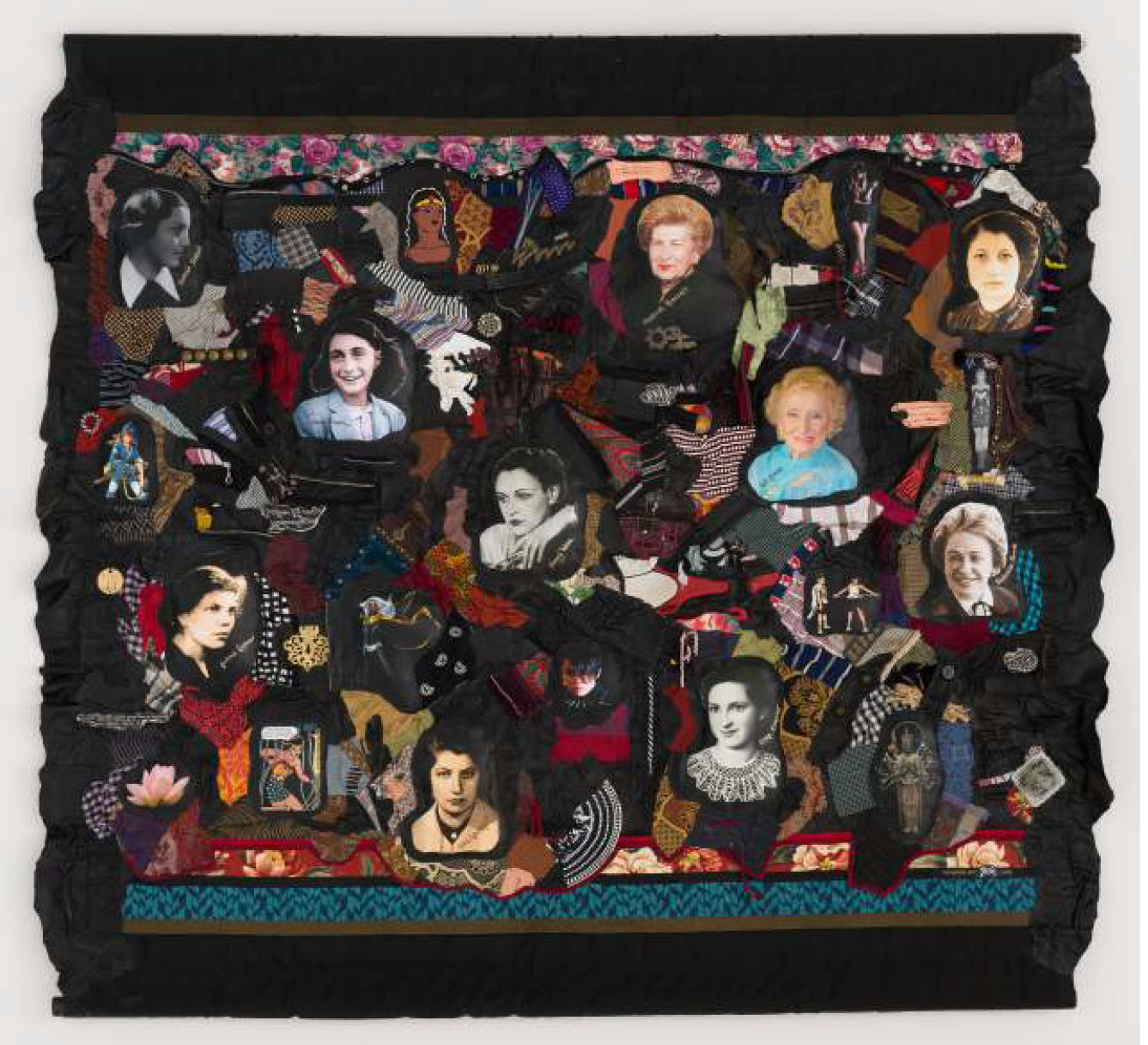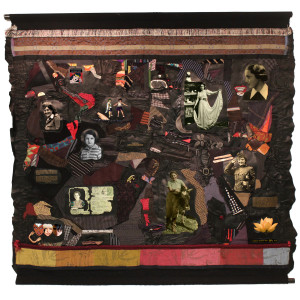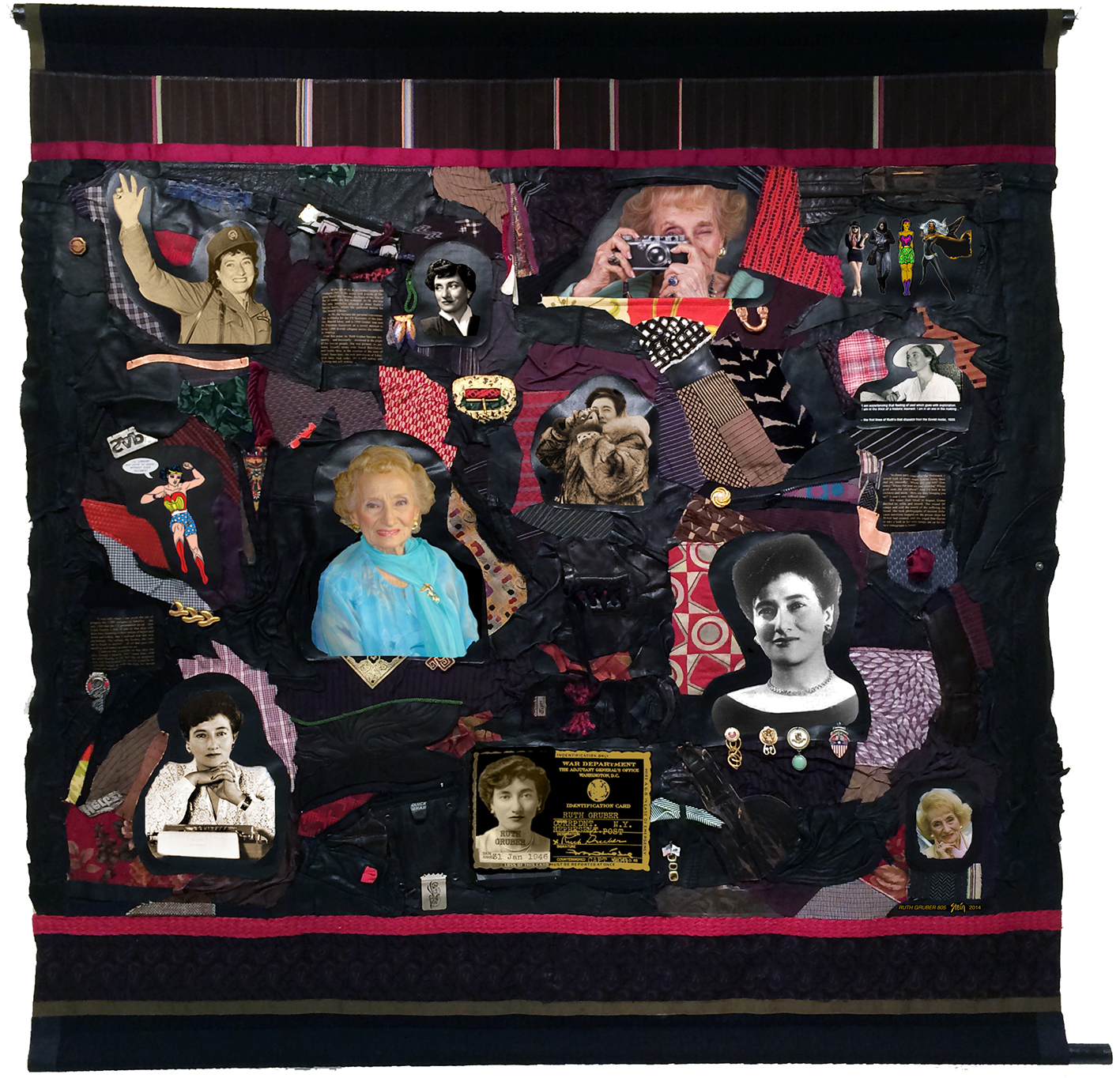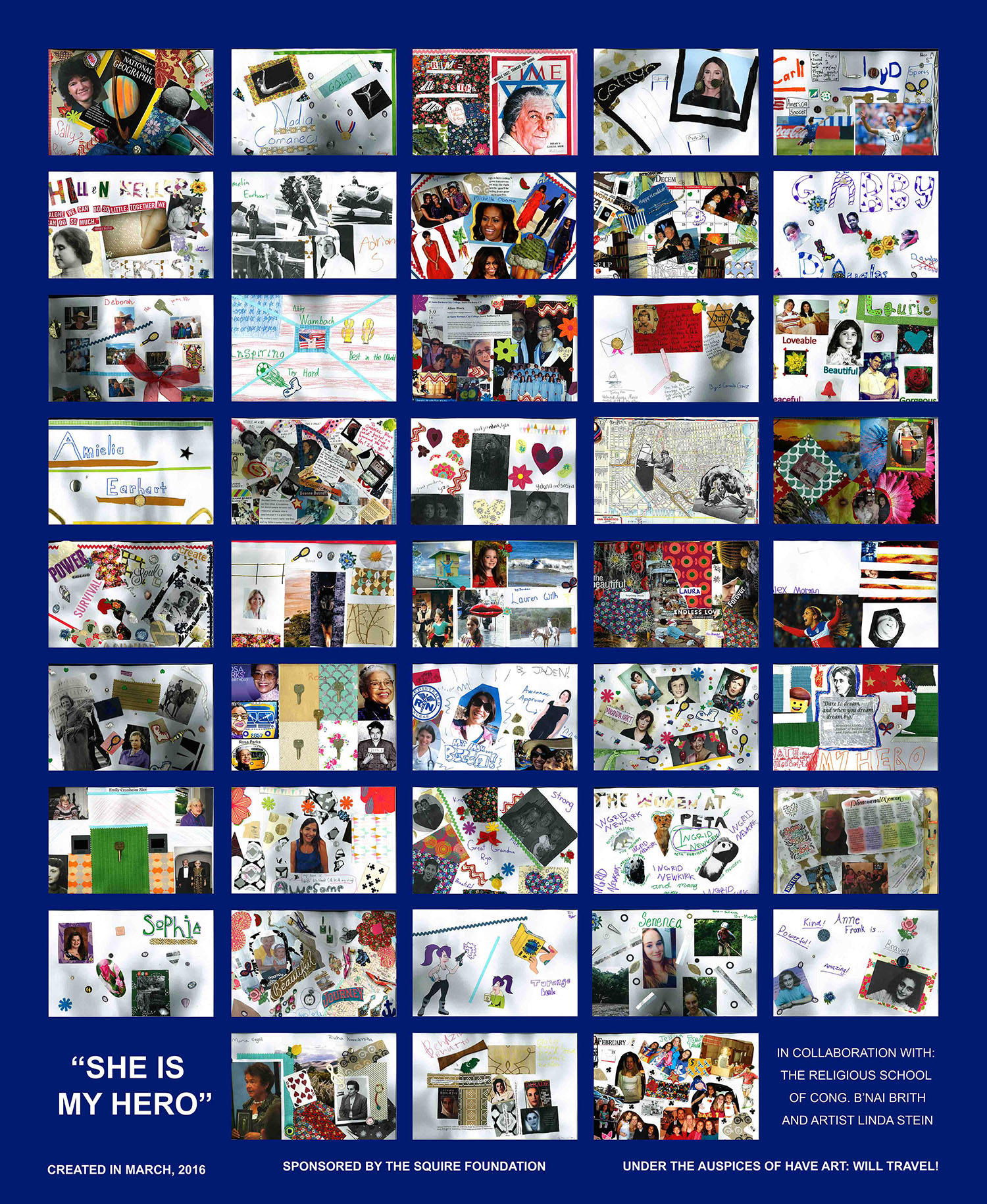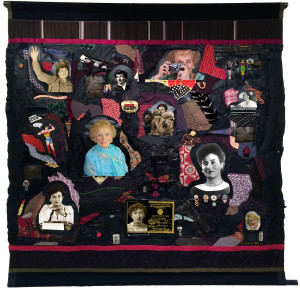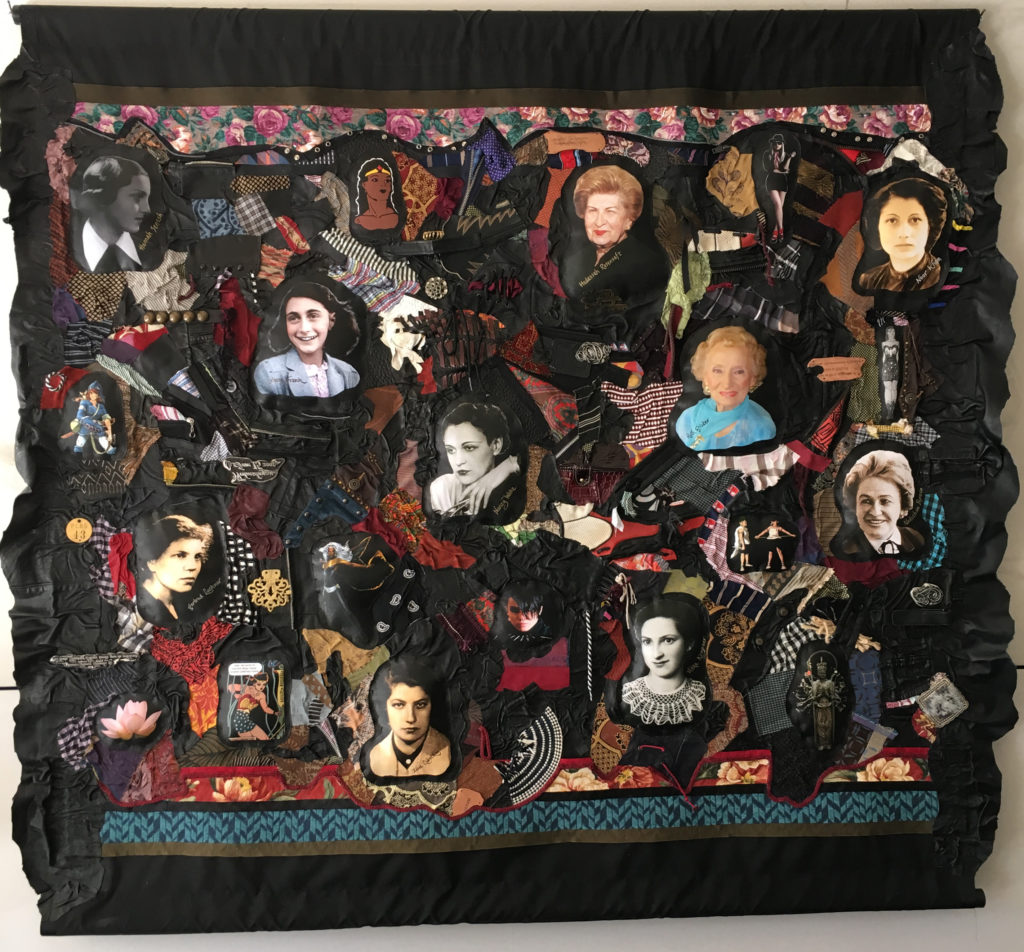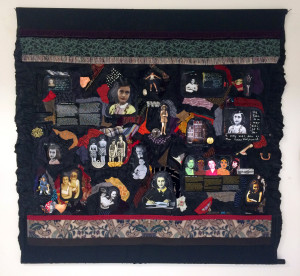Holocaust Heroes: Fierce Females — Tapestries and Sculpture by Linda Stein (H2F2)
The sculpture for H2F2 includes Heroic Tapestries, Spoon to Shell Sculptures, and a Protector Sculpture as well as a 7-min film and book. The exhibition represents different aspects of bravery during the time of the Holocaust: Jew and non-Jew, child and adult, World War II military fighter and ghetto/concentration camp smuggler, record keeper and saboteur. Together they represent the many types of female heroism, with war battle gear and without, during the years of the Holocaust. For her Spoon to Shell sculpture, the artist blended spoon and shell into an amalgam of materials, addressing sexual abuse. Protector includes a Wonder Woman shadow and becomes a symbol for the brave defender.
Click here to see the art in this series.
Click here to see a recording of Linda Stein giving a webinar about this series.
ENCOUNTERS with H2F2
Upstander
A brave upstander joins with others, or stands alone, to protect others from violent circumstances in everyday experiences, such as bullying, or actively engages in promoting the well-being of others to balance inequalities or oppression. The upstander curricular encounters with H2F2 are catalysts for building empathy and learning how to be an upstander. --Learn more
Upstander Encounters with H2F2:
- Civic Engagement
- Agency: Creating Interactive Stories on Becoming a Brave Upstander
- From Nativist Hysteria to Upstanders
- Activism
- I Will Be An Upstander: Creating Symbols, (Re)Creating Culture
- Special Topics: Feminist Art Encounters and Activism
- “The Chance to Be Brave, the Courage to Dare”
- We All Have a Hand in Becoming an Upstander: Fierce Upstander Maps
Power
Power encounters with H2F2 involve discussion about (dis)(em)power(ment). In Linda Stein's H2F2 tapestries and sculpture, she incorporates superheroes and fantasy icons that are juxtaposed with real-life female heroes. Stein's intent is to exemplify women’s heroic acts of rescue and protection during the time of the Holocaust. The power encounters also introduce other artists, Chitra Ganesh, and Ivan Velez Jr., who also use comics in their artwork.-- Learn more
Power Encounters with H2F2:
- Empowerment Tapestry Activity (PDF)
- Diagram a Superhero Activity (PDF)
- Videos and Discussions Activity (PDF)
- Self as Superhero Activity (PDF)
Hero
Create a graphic novel/cartoon of the Hero Around/Within Us that incorporates self-narratives of real and/or imagined experiences. From reading the essays in the 2016 H2F2 book or from your own research on each of the heroes (see links on the Leadership encounter to begin research), and looking at the Holocaust Heroes: Fierce Females tapestries, one can learn about the lives and actions of the women, and the context of their lives. Add to, as well as, respond to the interactive prompts overlaid on the digitized tapestries, to explore Stein’s use of feminist pop culture and religious icons such as Wonder Woman, Kannon, and Mononoke—who personify the values of empowerment, strength, justice and protection. -- Learn more
Hero Encounters with H2F2:
- Hero
-
Lesson Plan with Reflections & Student Examples: She is My Hero
Justice
An encounter with the Anne Frank tapestry called, Welcome Home, begins with reading excerpts from her diary and current news reports concerning groups of people seeking safety in a foreign land. The current news could be juxtaposed with film images from Voyage of the Damned. The historical documentary depicts the incident in 1939 when a ship traveling from Germany to Cuba, full of Jewish refugees seeking asylum and safety, is refused entry to Cuba; and then when they try to land in the United States, in Florida, they’re again refused entry. Forced to return back to Germany, some people jumped overboard. While eventually some refugees were granted asylum in Belgium, France, The Netherlands, and the United Kingdom, many were not, and subsequently exterminated in Nazi concentration camps. How could the past inform the present, so that people could be welcomed home? Create a collage, which includes news images from the past and present, along with diary entries, that brings a personal perspective to current and historical events about the desire to be welcomed home. Seeking and learning about a diverse range of life narratives prompts an empathetic process of understanding injustice within the complexities of environments and communities.
Justice Encounters with H2F2:
Learn moreARTifact
The ARTifact encounter, with the Spoon to Shell Series in the H2F2 exhibition, begins with a discussion, while looking at the art, with others whose social class, age, gender, sexuality, and ethnic background differs from one’s own. To join the discussion click here. To interpret a cultural artifact, it is important to look at conditions for its production as they relate to socioeconomic class structures, gender-role expectations, and specific visual codes of the time, as well as how those codes have changed over time. Using Regender (Yee, 2005), read articles that are regendered–about the cultural artifacts–to discern whether and how the meaning has changed. Look again at each work in the Spoon to Shell Series. What does the spoon signify in relation to the shells and text fragments and other items in the box assemblages? The uniformity of the 20 black, wooden, box sculptures brings order and calm to the chaos, fragments, and tensions that are visible from the window of each box. Stein uses spoons and shells in the box sculptures as metaphors for power and vulnerability. --Learn more
ARTifact Encounters with H2F2:
Learn more
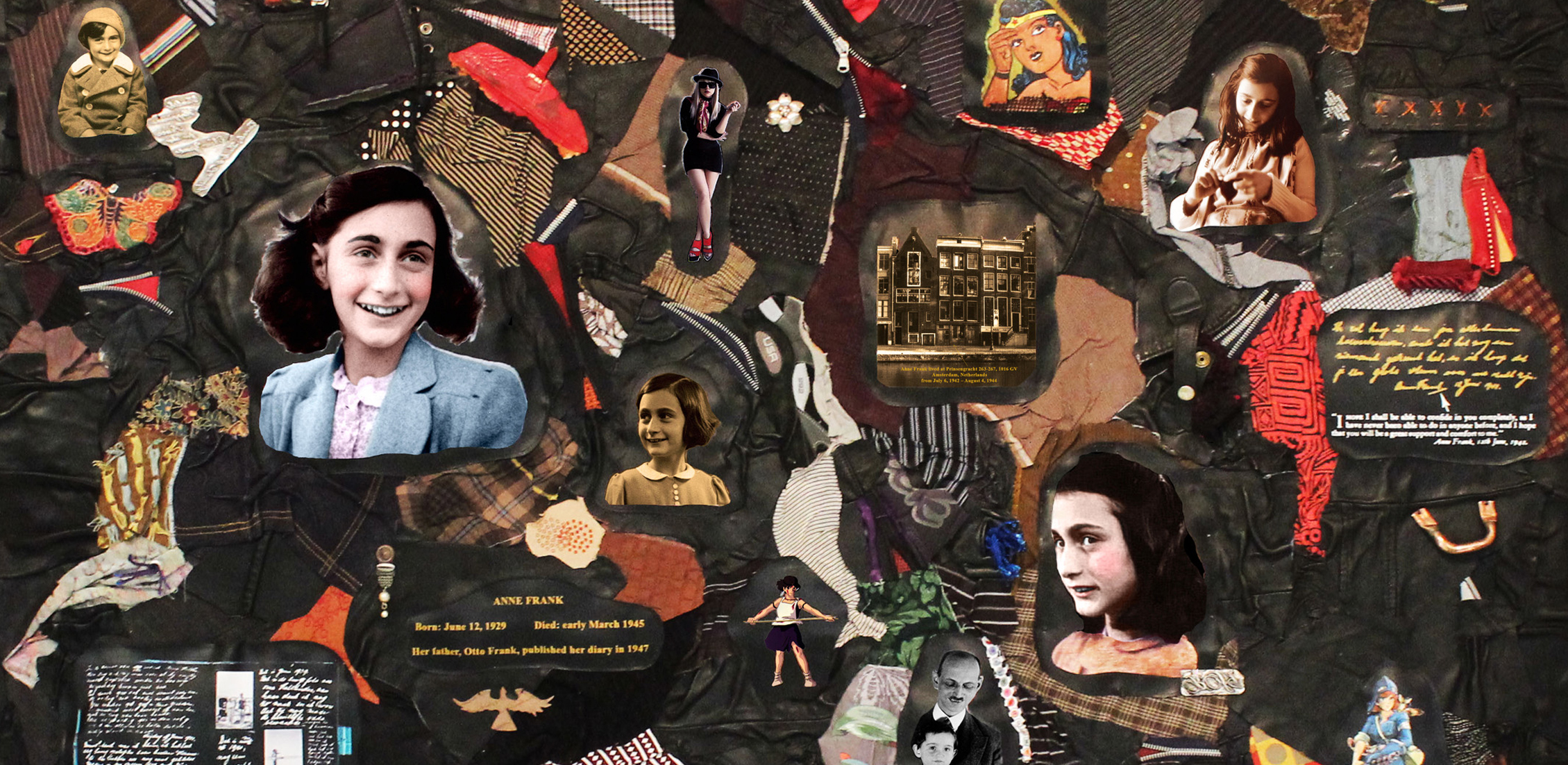
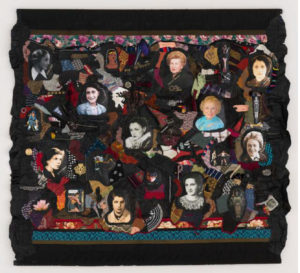 is crucial for upstander behavior to occur as well as intensity of conviction for justice. Art can evoke empathy by invoking the past. Through the specifics and particulars of human life, people are moved to take upstander action.
is crucial for upstander behavior to occur as well as intensity of conviction for justice. Art can evoke empathy by invoking the past. Through the specifics and particulars of human life, people are moved to take upstander action.